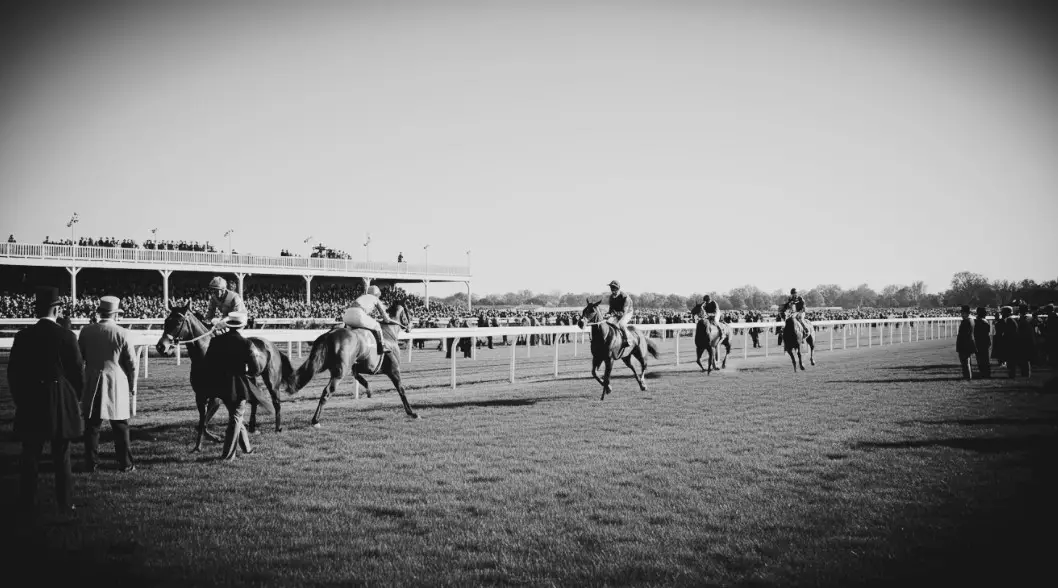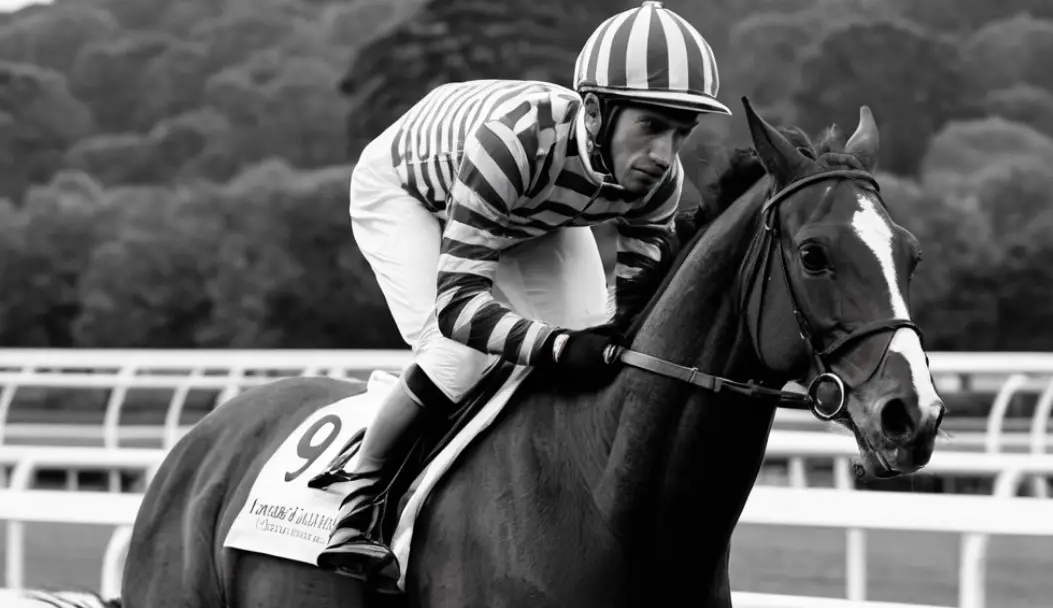Sheepshead Bay, located in southern Brooklyn, has long been a site of cultural and historical significance.
Among its most notable contributions to history was the Sheepshead Bay Race Track, which once stood as a testament to the thriving horse racing culture of the late 19th and early 20th centuries.
The track played a pivotal role in Brooklyn’s development, drawing elite figures and racing enthusiasts alike.
The Rise of Sheepshead Bay Race Track
The establishment of the Sheepshead Bay Race Track in 1880 marked a transformative moment in American horse racing history.
Created under the vision of prominent figures such as Leonard Jerome, August Belmont, and William Travers, the track represented the aspirations of the Coney Island Jockey Club.
The organization sought to elevate the sport, and the track became a beacon of innovation in the racing community.
Key Figures Behind Its Creation:
- Leonard Jerome: Known as the “King of Wall Street,” Jerome brought financial clout and influence.
- August Belmont: A philanthropist and racing enthusiast with a passion for developing world-class events.
- William Travers: A noted sportsman who added prestige to the venture.
One of the most groundbreaking features of the Sheepshead Bay Race Track was its dual-course design, which included both dirt and turf tracks. At a time when turf racing was nearly unheard of in the United States, the introduction of a turf course in 1886 set a new standard and underscored the tracks dedication to innovation.
Innovative Features of the Track:
- First U.S. turf track (introduced in 1886).
- Dual-course design: dirt and turf, allowing for greater versatility.
- Advanced facilities designed to cater to elite spectators.
The Golden Era of Horse Racing at Sheepshead Bay
The Sheepshead Bay Race Track reached its pinnacle during the late 19th and early 20th centuries, earning its place as a centerpiece of luxury, sport, and social prestige.
It became more than a racing venue, it was a cultural phenomenon.
Figures like William Kissam Vanderbilt and Leonard Jerome, whose names were synonymous with wealth and influence, championed its success and cemented its status as a gathering place for New York’s high society.
Key Patrons and Their Influence:
- William Kissam Vanderbilt: An heir to the Vanderbilt fortune, he brought financial resources and elite connections to the track.
- Leonard Jerome: Often referred to as the “Father of American Horse Racing,” Jerome’s vision and enthusiasm shaped the track’s identity.
The races at Sheepshead Bay Race Track were more than sporting events, they were grand spectacles.
Wealthy families would don their finest attire and arrive in carriages to enjoy the thrill of competition, network, and flaunt their social standing.
The venue embodied sophistication and extravagance, making it a must-attend destination for the elite.
Cultural and Economic Impact
The influx of visitors created demand for hotels, restaurants, and transportation, fueling Brooklyn’s growth.
The races became high-profile social events, rivaling the city’s most prestigious galas.
Newspapers of the era devoted significant attention to the races, elevating their prominence nationally.
The popularity of Sheepshead Bay Race Track also spurred significant infrastructure improvements in the surrounding area.
New transportation links were developed, including expanded trolley lines and better road access. These enhancements transformed Sheepshead Bay into a bustling hub of activity, benefiting local businesses and residents alike.
Infrastructural Advancements:
- Development of transportation routes to accommodate growing crowds.
- Construction of luxury accommodations for out-of-town visitors.
- The emergence of new businesses catering to affluent patrons.
Decline and Closure
The Duesenberg racing team traveled to the Sheepshead Bay board track in Brooklyn, New York, for non-competitive speed trials in November 1919. The Duesenbergs were the last automobiles to run at the short-lived two-mile track that opened in 1915. pic.twitter.com/yNDIrkJEdG
— Auburn Cord Duesenberg Automobile Museum (@ACDAM1974) February 23, 2022
The Sheepshead Bay Race Track’s prominence began to wane in the early 20th century due to a series of legal and financial challenges.
The 1908 anti-gambling laws in New York dealt a severe blow to the horse racing industry, leading to a sharp decline in attendance and profitability. Without the revenue generated by betting, the track struggled to sustain itself. Bettors shifted to online casinos and bookies that offer horse betting, like www.twinspires.com.
The emergence of competing venues like Belmont Park further exacerbated its troubles. As racing enthusiasts shifted their attention elsewhere, Sheepshead Bay Race Track’s relevance faded.
By 1919, the demolition of the track had begun, marking the end of an era. Despite its closure, its contributions to the horse racing world left a lasting imprint.
What Remains Today

The Sheepshead Bay Race Track may no longer exist physically, but its influence continues to resonate in the fabric of the local community.
Though demolished over a century ago, the legacy of the track is preserved through cultural references and the neighborhood’s historical narrative. Local residents and historians occasionally highlight its storied past, ensuring it is not forgotten entirely.
Cultural References:
- Mentions of the race track in local historical societies and community discussions.
- Retrospectives in museums and archives dedicated to Brooklyn’s history.
- Modern racing events, like Belmont’s Sheepshead Bay Handicap, pay homage to the track’s legacy.
Today, Sheepshead Bay has evolved into a neighborhood with a strong maritime identity, defined by its picturesque waterfront and acive fishing community. The Bay Waterfront area is a popular destination, offering a blend of recreational activities, dining, and cultural experiences that attract both residents and visitors.
Modern-Day Sheepshead Bay:
- Known for its fishing fleets, scenic views, and bustling piers.
- Seafood restaurants and cafes lining Emmons Avenue provide vibrant gathering spots.
- The area reflects the influences of the many communities that have settled there over the decades.
While the race track is no longer part of the neighborhood’s physical identity, its legacy persists as part of the Sheepshead Bay narrative.
The energy and innovation that once defined the track live on through the neighborhood’s dynamic character, blending historical significance with modern vibrancy. Residents and visitors alike appreciate how the area’s present-day attractions are informed by its storied past.
Preservation of History
Efforts to preserve the memory of the Sheepshead Bay Race Track have taken various forms.
Historic photographs and documents provide a glimpse into its storied past, while mentions in racing history books and museum exhibits celebrate its contributions.
Organizations dedicated to maintaining Brooklyn’s history have ensured that the track’s role in shaping the borough’s identity is not forgotten.
Events and exhibits commemorating Sheepshead Bay’s racing history serve as reminders of its former glory. These initiatives emphasize the importance of acknowledging the achievements and cultural milestones that have defined the area over the decades.
The Bottom Line
The Sheepshead Bay Race Track remains an essential chapter in Brooklyn’s history. While its physical presence has vanished, its influence continues to resonate.
Preserving this legacy honors the cultural and economic contributions that shaped the neighborhood’s identity, ensuring its vibrant past is remembered for generations to come.




